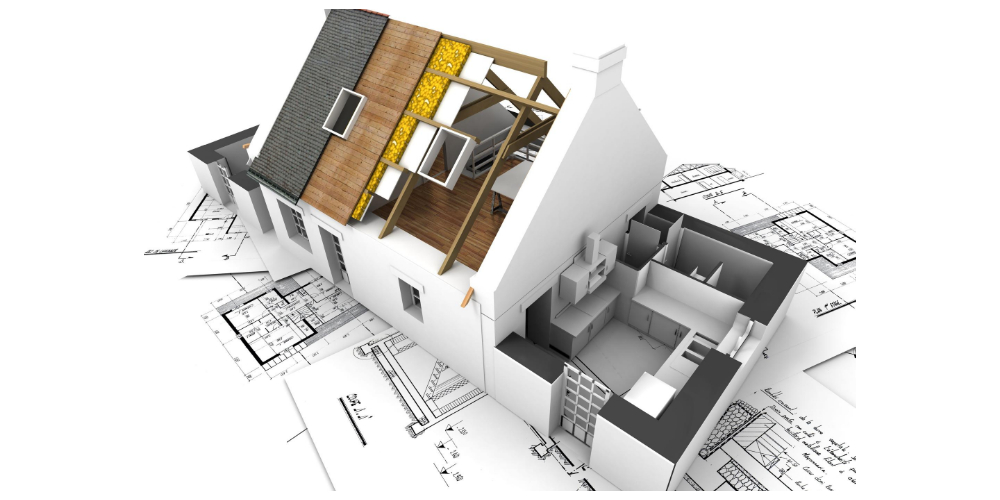Building information modeling (BIM) is valuable for the construction industry. Both designers and builders can ensure success in every stage of the project lifecycle utilizing BIM software.
Any construction project requires effortless collaboration among architects, engineers, and contractors. Building information modeling software can help them stay on the same page and meet the clients’ expectations by minimalizing any miscommunication and construction errors.
Especially if you are dealing with large or complicated construction projects, BIM software is a must-have solution. Let’s explore building information modeling, the benefits and risks involved with BIM tools, trends in the building information modeling market, and the best BIM applications.
What is Building Information Modeling?
Business information modeling is the process of creating and managing data on a building project through its cycle. While doing this modeling, you need to develop a digital description of each aspect of the construction asset. The description usually includes data-rich 3D models and related structured data.
Benefits of Using Building Information Modeling
#1. Better Communication and Collaboration
With modern BIM models, onsite collaborations through sharing and versioning become possible. Teams can also review the models from anywhere using mobile devices and seamlessly share them with all stakeholders.
#2. Cost Estimation Based on Model
Business information modeling helps you with effective model-based cost estimation. As BIM tools can automate the tasks like applying costs, estimators function quickly to the data your need.
#3. Increased Productivity

Users can immediately generate production drawings or databases using BIM data. Creating the models in a controlled environment means less waste of time and money and more efficiency.
#4. Streamlined Process Management
A construction project consists of various stages, and all can be managed efficiently using BIM tools. With all involved teams collaborating with a simple platform, there is less chance of miscommunication and errors.
#5. Overall Better Builds
BIM tools ensure better control over design execution and technical decisions. Since the projects can be tested ahead of the construction work, users can identify any structural deficiencies.
Risks of Using BIM
- Unless you know how using a BIM tool will impact the contract between the stakeholders, it is not legally safe to use it.
- As the business information modeling market is growing, it might be the first time for some teams. As a result, they may spend too much time on it unnecessarily.
- Involved parties might not know what business information modeling is and hence, find investing money and time in it useless.
Applications of Building Information Modeling

Simply put, business information modeling can be utilized at every step of a construction project. The followings are the most common applications of BIM software:
- Visualize any architecture in 3D models with the least effort.
- Generate fabrication drawings for different building systems from the completed model.
- Automatic cost estimation update according to the changes in the model.
- Review projects to check if those adhere to the building code.
- Sequentially coordinate material ordering, fabrication, and delivery.
- Manage processes such as space planning, renovation, and maintenance.
- Illustrate the evacuation plan and possible issues graphically for forensic breakdown.
- Check interferences to avoid any conflict and collision.
Existing Challenges in Building Information Modeling Market
- Data interoperability issues need to be removed using well-defined transactional construction process models.
- The digital design data should be computable.
- There should be practical strategies that can successfully exchange and integrate data among various components of BIM.
- The need to define which stakeholders to develop and operate BIM.
- The guidelines for the BIM process have to be standardized.
Latest Trends in Building Information Modeling Market
#1. Energy Efficiency
Like the rest of the world, BIM also focuses on environment-focused green construction. Besides saving nature, this can be labeled as a marketing strategy. Modern-day architects and engineers prefer energy efficiency designs, and BIM can offer you improved energy modeling for your design choices.
#2. 3D Printing

The early 3D printing had its drawbacks, but the new ones have overcome those. Now, you can transform your digital model into a real one. BIM users often create accurate scale models using a 3D printer.
#3. Cloud Technology
Cloud technology has taken over the world, and BIM is no different. Cloud-based BIM tools are becoming more popular as these let construction professionals access resources from anywhere, anytime. These also support collaboration from various locations at the same time.
#4. Automation
Automation means using digital applications, processes, and robots to replace the tasks requiring human effort. BIM allows you to automate work and keeps you safe from health hazards.
We will now look at the best building information modeling software.
Revit
Mainly designed for AEC teams, Revit helps them design and develop high-quality infrastructure. You can create 3D models using easily by adding shapes and structures with accuracy and precision.
There is no need to worry about documentation work as this tool helps you streamline it with features like instant plan revision, elevations, and scheduling. Its unified project environment empowers all the teams equally as users can sync, save, and share model-based CAD and BIM data using the tool.
Besides integrated analysis tools, Revit offers interoperability support for numerous CAD and BIM tools. Therefore, project teams can easily uncover insights and get outcomes from data.
Archicad
Archicad boasts of user-friendly interface and robust built-in tools for designing, visualizing, and delivering building projects. Its architectural visualization tools transform your ideas into compelling designs for future buildings. Hence, you can bring lives to your models and make stakeholders interested in them.
Architects can build fascinating projects with its large mode support and algorithmic design tools. Archicad also provides you with different out-of-the-box documentation tools. With these, users can generate schedules and sheets using the data from the BIM model.
Moreover, you can get rid of the paperwork by incorporating these with a local BIM requirement-compliant publishing workflow. No matter the size or complexity of your project, this tool facilitates easy collaboration with the team members and stakeholders.
Navisworks is a review and coordination tool that can help you with project delivery. It lets you visualize and combine all your construction design data through one federated model.
With this BIM application, users can readily identify clash and interference issues and fix them even before the construction. Thus, they can save valuable time on the site and do not need to work on it later.
Navisworks has a TimeLiner tool for creating 4D simulations and lets you animate the model objects. It can also develop synchronized project views using files from Revit and AutoCAD. You can also analyze the takeoff data by moving it to Excel.
Users can schedule right from project models and import them from third-party project management applications when needed.
SketchUp
Using SketchUp, you can easily create beautiful building designs and collaborate on those. The 3D modeling software offers some robust tools to facilitate sustainable building design. You can even access plugins to extend the functionalities of this tool.
It has a collection of millions of pre-built 3D models, from which you can choose any and start working on it. SketchUp also offers quick insights on design research and allows you to create professional photorealistic images before exporting them.
Some of its other mention-worthy features are Augmented reality mobile viewer, (XR) headset viewing, 2D design documentation, fully rendered animation export, and real-time model visualization. You can access this cloud-based tool from any web browser on your computer and iPad.
OpenBuildings Designer
If you want to quickly design and deliver novel architecture, OpenBuildings Designer is the platform for you. This one-stop solution offers the features of both CAD and BIM tools to help you meet the increasing demands of the present time.
It comes with comprehensive architectural tools for you to design and develop facilities, regardless of any size or complexity. Its space planning catalog can be utilized to design ticket kiosks and passenger information displays. For visualization, it offers 3D images, animations, and photorealistic renderings.
You can also design complex MEP systems, including power, lighting, fire detection, piping, air-handling, and plumbing systems with OpenBuildings Designer. It is also capable of generating building documentation and reports.
Procore
Procore is a tool for construction management that connects the field teams with virtual design and construction models. With it, teams can build what the owners are expecting through collaboration with all involved parties in 2D and 3D.
It lets you deliver exceptional performance by developing various models with ease. While working on this tool, users can design elevation drawings straight from the federated model and save the time they might have used to recreate them.
By reducing installation errors, Procore saves your money and time. The real-time collaborative workflow tool lets the teams quickly get clash-free 3D models. You can also streamline the whole coordination process by connecting design, operations, and field teams.
Conclusion 🏢
By incorporating BIM software applications in the construction project, you can avoid overruns, prevent unnecessary delays, and optimize internal communications. Therefore, architects and builders should choose a BIM tool from the discussed list considering the required features, project size, and building design.
Now that you know about business information modeling and the top tools for BIM, you may check the list of the best CAD software.



![Kirelos Blog 8 Best Landscape Design Software for Professionals [2023] 8 Best Landscape Design Software for Professionals [2023] Design](https://kirelos.com/wp-content/uploads/2023/11/26651/8-best-landscape-design-software-for-professionals-2023-600x450.jpg)